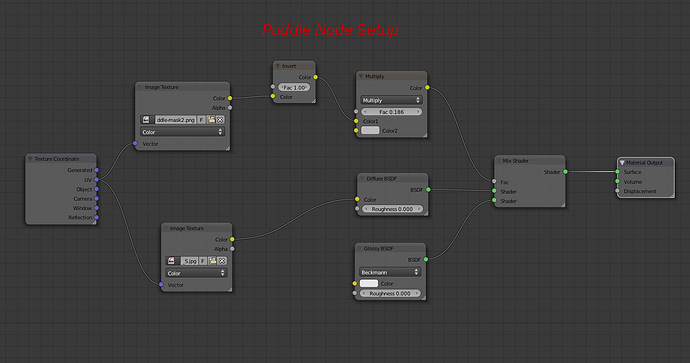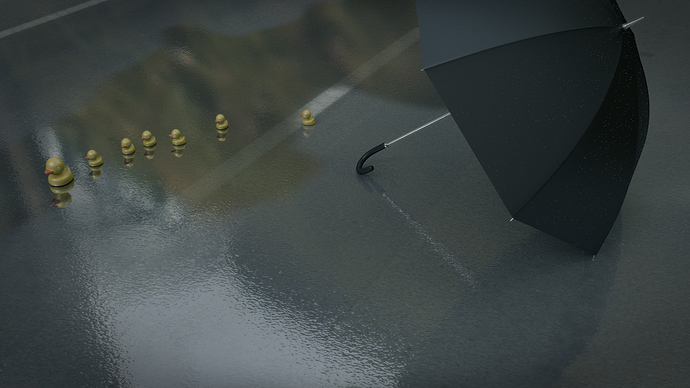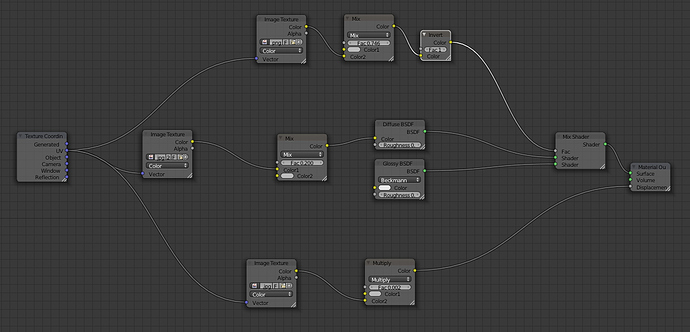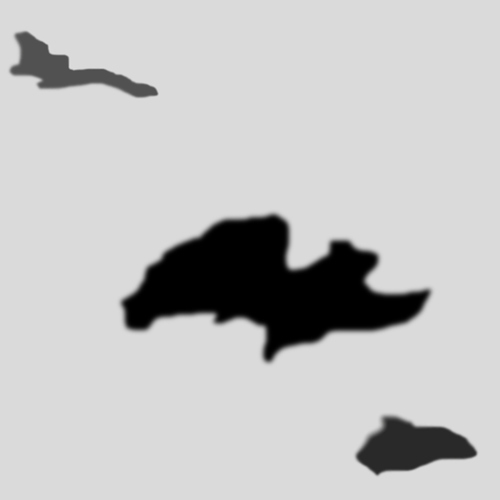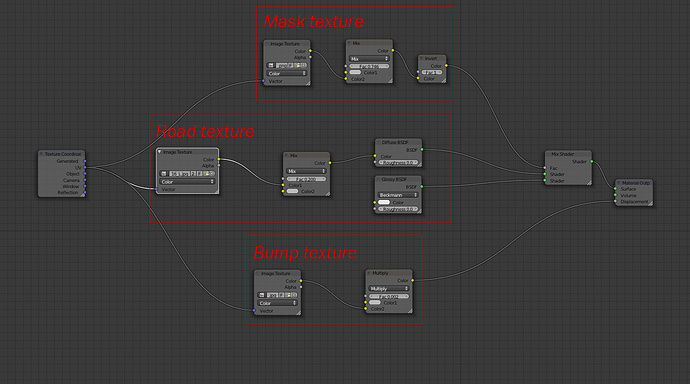Hi guys,
Bit of a weird one this, it was pretty easy in BI, in cycles though I’m a bit stumped.
I’m trying to see if I can create puddles, or rather a wet road with deeper puddles here and there for variation. I don’t particularly want to use mesh displacement for it for the sake of render time, but instead I’d prefer to try and produce a material/shader setup to do the work.
I’m thinking of it this way:
Diffuse, Glossy Mix - The diffuse with the actual road texture
This will produce a wet road look out of the tin.
It’s the next step I’m stuck on - somewhere I need to use a alpha mask maybe with a image displacement bump map to give some controlled depth that on one hand shows the above road texture through a mask while adding extra bump in those masked areas.
Anyone got a clue of the possible node setup please?
My head’s a bit fried, so I’m probably looking at this the wrong way.
Cheers, Jay 
Update - I’ve included an example of the working node set up below.
Create a grayscale image texture with darker areas where you want puddles (the darker, the more gloss, you can obviously make a “bleed” effect to create puddles with varying depth) and lighter where you want the road to show up. Don’t worry too much about the overall contrast, you can fix that later with a color mix or color ramp node in between.
You could also use a procedural map made from one of the noise nodes. This might save you a lot of memory usage during render at the expense of control.
Use your texture as an input to the mix factor of your mix node between the diffuse (road material) and glossy (water material)  If you get the opposite result of what you wanted, swap where the diffuse and glossy nodes plug into the mix node.
If you get the opposite result of what you wanted, swap where the diffuse and glossy nodes plug into the mix node.
You can use the same texture mask to control the amount of bump mapping.
Thanks for that Monsterdog, it was simple like I thought. As I had to re-read your help a few times to get the gist, I thought I’d post up the node setup for others.
I added an invert node because I readily thought that black would be reflective, where as it was the white 
Jay 
can you show the 2 pics you sue for this and the end result pic so peoples can see what it gives
thanks
Great, glad to be of help 
I don’t think you need the invert node, just swap the glossy and diffuse node inputs in your mix node.
Might save you a little time and memory, probably not much though.
Hi,
I agree, it can be a bit hard to visualise nodes setups without an example, so here’s one I threw together this morning for you guys.
The Node set up.
The very basic puddle texture
The puddle texture is obviously very simple and would be better with more detail, but it seems to do the job reasonable well.
I didn’t remove the invert node as my head was too busy at the time, as suggested I think if you swap over the diffuse and glossy you won’t need it.
Jay 
Pretty sweet, I really like your umbrella with the drops on it. Great modeling and very nice material for the fabric, I wonder if you would share it?
You could use the same puddle texture to moderate the bump so the puddles don’t have the asphalt texture bump on it.
Maybe it would be as simple as plugging your texture into a math “maximum” (or “minimum”) node (to create a black/white texture), then into the factor of your multiply node? Or maybe you would need to use it as a factor on a color mix between a solid color and your bump.
I find it convenient to have a spare diffuse node sitting around for plugging into the material to test the effects of various things I do to textures or bump maps.
trying to redo this effect !
but you got 3 imag texture there
can you tell which one is which
like is the mask applied to the top , middle or bottom iamge text?
ect…
thanks
Hi guys,
Monsterdog, damn the material for the umbrella fabric wasn’t that accurate at all, I think it looks better than it actually is technically - there’s no transparency/translucency like there should either, just a standard mix - I didn’t think it would be that obvious for the simple render, but for reference, here it is:
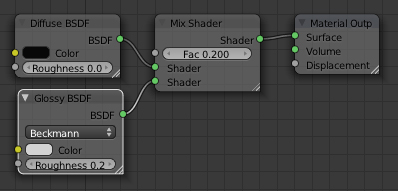
The water droplets aren’t dispersed correctly, I image it’s because there isn’t enough topology on the surface between the brolley braces. I don’t usually use particles that much, so I’m not 100% - Blender seems to crash a lot on GPU/Cycles with them too a lot, wish I knew why - Maybe you know why?
I’ll look into your node ideas when I have a crack at making an actual scene from this material 
RickyBlender, Here’s an updated grab that should be more clear:
The road texture came from CG textures although I had to create a modified grayscale of it for the bump map - just a higher contrast BW essentially.
The scene is lit by one medium mesh emitter and also a HDRI which also gives a reflection in the water.
Please post up your re-work, it’d be interesting to see. 

 If you get the opposite result of what you wanted, swap where the diffuse and glossy nodes plug into the mix node.
If you get the opposite result of what you wanted, swap where the diffuse and glossy nodes plug into the mix node.
